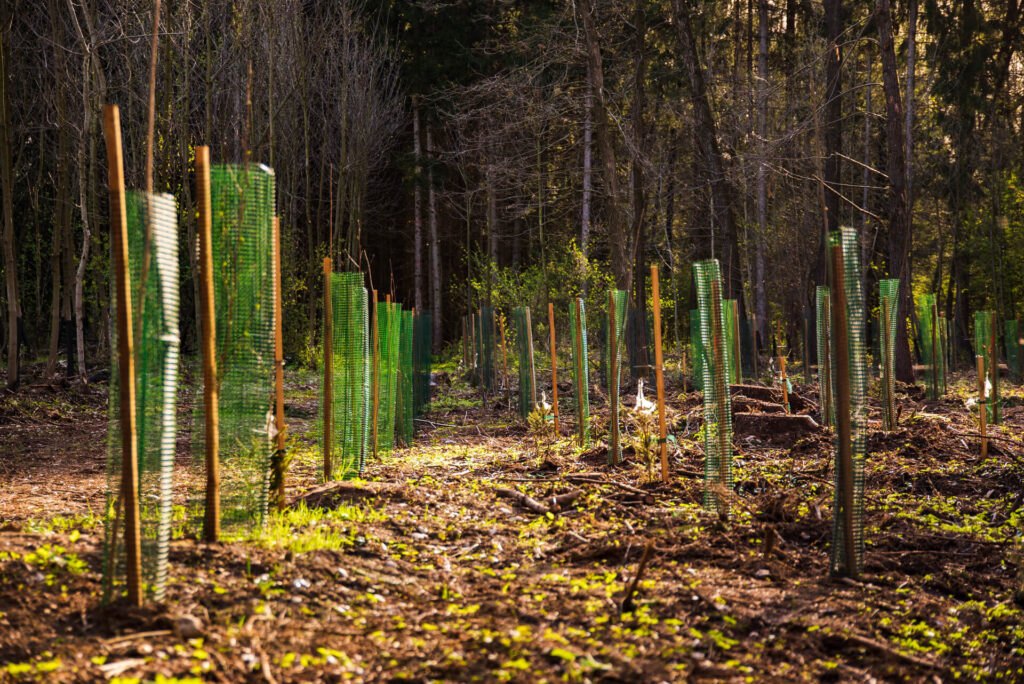It is common knowledge that air travel is environmentally problematic. Thousands of planes take off every day around the world and make their way around the globe. And in the summer months in particular, climate-conscious people are confronted with the question: Where am I going on vacation and how do I get there? Situation dilemma: the contradiction between one’s own environmentally conscious principles and the desire to see the world.
The simplest answer to this dilemma is, of course, to avoid flying and travel in the most climate-friendly way possible. We have already explained how to do this in THIS blog post.
But the fact is that not every place can be reached by climate-friendly means of transport such as bus, train or car. So, as a person who makes an effort to be sustainable, do I have to give up long-distance travel?
CO2 compensation for air travel
The travel industry is proposing a solution to this moral dilemma: CO2 offsetting through compensation payments. The basic idea of CO2 compensation for air travel is that travelers or airlines can offset the amount of CO2 emitted by their flights by financially supporting projects that either remove the same amount of CO2 from the atmosphere (e.g. through reforestation projects) or reduce CO2 emissions elsewhere through other measures (e.g. through the use of renewable energies).
In practice, it looks like this: You register on the website of a CO2 offsetting provider, have to provide information about your planned trip (place of departure and arrival, means of transportation, and so on) and select an offsetting project. You are then given a certain amount for the offset payment, which you pay immediately.

Criticism of CO2 compensation payments
Unfortunately, this solution is not as easy as it sounds in reality. In recent years, research by the weekly newspaper Zeit and the journalistic media platform Flip has shown that the promises made by certain carbon offset providers are often empty and that their climate projects are of no benefit to the climate. A particularly shocking result was provided by the research by Die Zeit and the Guardian into the world’s leading certifier of CO2 offsetting, Verra: according to the investigation, more than 90 percent of the certificates from the projects investigated do not save any CO2.
How is that possible? One of the main concerns with certificates from forest protection projects (such as those issued by Verra) is the overestimation of actual emission reductions. This can happen if the assumed rate of deforestation is unrealistically high or if it is difficult to accurately measure the avoided emissions. As a result, the actual CO2 savings from the projects are lower than originally stated, which leads to an overvaluation of the certificates.

Climate protection projects such as planting trees should also be viewed critically, as the planted trees take a long time to grow and have a real impact on the climate. The fossil emissions we cause linger in the atmosphere for up to 1,000 years – offsetting projects should therefore also be geared towards the long term. For this reason, it is recommended that no tree or land use projects are used for offsetting purposes.
Other reasons why CO2 offsetting should be viewed critically:
- Rebound effect: there is a concern that the possibility of CO2 offsetting could lead to people and companies being less motivated to reduce their actual CO2 emissions through measures such as reducing air travel or investing in more sustainable technologies. This “rebound effect” could result in overall emissions not being significantly reduced.
- Greenwashing: A common criticism is that CO2 offsetting is often used as a means of “greenwashing”. This means that airlines or tour operators can give the impression of being environmentally friendly by buying CO2 certificates without actually reducing their own emissions. This could lead consumers to believe that their flights are “climate neutral”, even though the actual CO2 emissions are not reduced.
- Structural injustice: Carbon offsetting could lead to wealthier individuals or companies transferring their responsibility to reduce carbon emissions to less privileged regions or individuals. This could lead to structural injustice if those who have contributed the least to climate change have to bear the greatest burden for combating it.
- Lack of regulation and standards: There are no uniform international standards or regulations for CO2 offsetting, which can lead to a lack of transparency and comparability between the various programs. This makes it difficult for consumers and companies to make informed decisions about the selection of carbon offset projects.

Which climate protection projects make sense?
Initiatives that are already profitable and could be carried out independently of the sale of offset certificates do not fulfill any additional benefit. The most important criterion for offset payments is therefore The climate protection project should only be made possible by the payment of the offset fee. If the project would have been financed anyway, the CO2 certificate is worthless as there is no additional benefit. The CO2 emitted by the flight would therefore not be offset, as the offset payment has no additional positive impact.
How too recognize trustworthy compensation projects
As the market for voluntary CO2 offsetting is completely unregulated and non-transparent, there are many completely ineffective certificates with which companies simply engage in greenwashing.
The WWF and a number of other NGOs have developed a seal of approval that is subject to strict criteria: The Gold Standard integrates emissions reductions with the UN Sustainable Development Goals to assess a project’s impact on the climate and other sustainability aspects. Projects that carry this seal can be assumed to be reliable in order to achieve a positive effect.
Therefore, you should always make sure to choose a climate protection project that has been awarded the Gold Standard.
